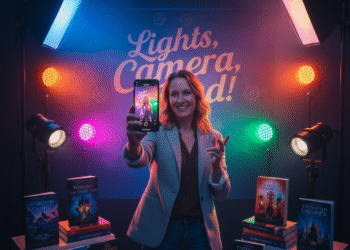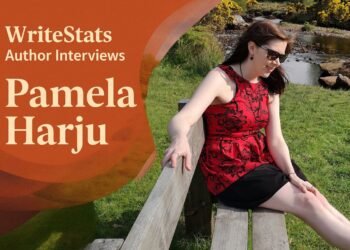Email Marketing for Authors can feel intimidating at first. We get it. Between writing, publishing, and trying to keep up with social media, building an email list might seem like one more thing on your plate. But here’s the truth: your list is the one place you truly own your connection with readers. No algorithms. No gatekeepers. Just you and the people who want to hear from you.
Getting to your first 1,000 subscribers isn’t as impossible as it sounds. With the right steps—and a little consistency—you’ll have a loyal group of readers who open your emails, share your books, and stick with you from launch to launch. This guide breaks it down simply, with tips you can actually use, even if you’re starting from scratch.
Why Email Marketing for Authors Matters
Email Marketing for Authors is more than a marketing tactic; it’s a way to build long-term, loyal relationships with readers. Unlike social media, where algorithms change constantly, email provides direct access to your audience’s inbox.
- Global reach: Over 4.5 billion people worldwide use email in 2025 (Statista).
- High ROI: Email generates an average of $36 for every $1 spent (Litmus).
- Author control: Unlike bookstores or social platforms, your email list is yours alone.
For self-published authors—who now make up 50% of Kindle bestsellers (WriteStats)—an email list is the single most valuable marketing asset you can build.
Step 1: Set Clear Objectives for Your Email Marketing
Ask yourself: What do I want my email list to do for me?
- Launch support? → Build a street team of advance reviewers.
- Long-term fans? → Send regular updates and personal notes.
- Sales growth? → Promote new releases, audiobooks, or box sets.
With goals in place, email marketing becomes a strategic tool rather than “just another task.”
Step 2: Pick the Best Email Marketing Tool for Your Needs
Platforms like Mailerlite, ConvertKit, or Mailchimp are author favorites. Look for features like:
- Automated welcome messages
- Segmentation (fiction vs. nonfiction readers, genre interests)
- Easy-to-use drag-and-drop design tools
💡 Tip: Stick with a free plan until you outgrow it. For most authors, that’s at 1,000–2,000 subscribers.
Step 3: Create a Compelling Lead Magnet
Nobody joins a list “just because.” Offer something irresistible:
- Fiction authors → Free short story, bonus chapter, or deleted scene.
- Non-fiction authors → Quick-start guide, checklist, or toolkit.
- Poets → A small digital chapbook or “behind the poem” commentary.
Example: A mystery writer offering a “locked-room puzzle short story” can attract readers eager for more in that genre.
Step 4: Design a Landing Page That Converts
Email Marketing for Authors relies heavily on first impressions. Your landing page should:
- Use a bold headline (e.g., “Get a free fantasy novella today!”)
- Have 1–2 sentences of benefits (why the reader should care)
- Include a simple sign-up form with just name + email
Stat: Conversion rates fall by up to 50% if your form has more than 3 fields (HubSpot).
Step 5: Promote Your Email List Everywhere
Don’t hide your sign-up link! Promote it consistently:
- Your book → Add a call-to-action at the back.
- Your website/blog → Place it above the fold.
- Social media → Share snippets from your newsletter to entice people.
- Podcasts or interviews → Offer your freebie directly.
💡 Growth tip: Even a $50 BookBub or Facebook ad can bring in dozens of targeted readers if your freebie is strong.
Step 6: Nurture Subscribers with Value
Your first 1,000 subscribers won’t matter if they unsubscribe quickly. Keep them engaged with:
- Welcome series: 3–4 automated emails introducing yourself.
- Regular updates: Stick to a schedule (weekly, biweekly, or monthly).
- Reader-first content: Mix book promotion with personal stories, writing updates, and book recommendations.
Remember: readers signed up for connection, not just constant sales pitches.
Step 7: Track, Test, and Improve
Great Email Marketing for Authors is built on data. Watch:
- Open rates (34% average, aim higher by testing subject lines)
- Click-through rates (3–5% is a good benchmark)
- Unsubscribes (keep it under 0.5%)
Experiment: Try a subject line like “A secret chapter you’ve never read…” vs. “Bonus chapter inside”. Small tweaks can double your engagement.
Common Mistakes to Avoid in Email Marketing
- ❌ Buying email lists (It can harm your reputation and affect how well your messages get delivered.)
- ❌ Forgetting personalization (first names matter!)
- ❌ Over-selling (balance content with value)
The result? Happier subscribers who actually look forward to your emails. And remember: 93% of indie authors report being happy they self-published, email marketing is one of the tools that makes this possible.
Final Thoughts: Your First 1,000 Subscribers
Email marketing can be manageable. Consider it as planting seeds; each subscriber represents a relationship that can develop into reviews, book sales, and long-term loyalty.
✅ Your action step today:
Plan your lead magnet, create a landing page, and promote it on one channel this week.Each step brings you closer to your first 1,000 subscribers and, more importantly, to a sustainable author career built on direct reader relationships.









